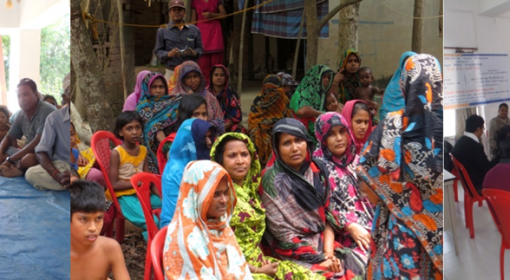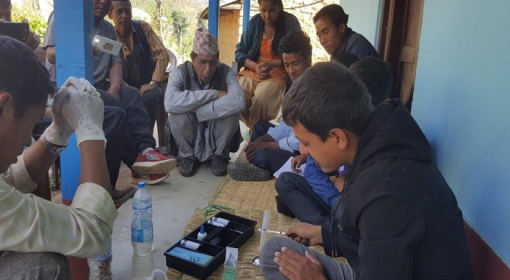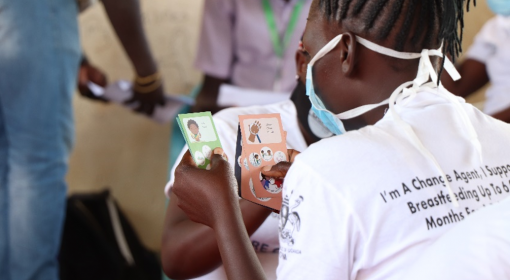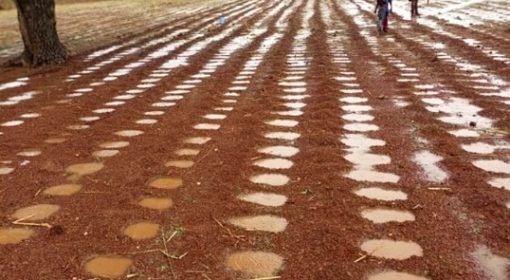The user-centered approach for tools’ development
by Aldo Zamarroni Peralta and Judith de Bruijne, Practica Foundation
July 29, 2021
Under the flag of the WASH Alliance International, Practica Foundation has started a limited 2-weekly blog series on Asset Management of small-scale water systems. This is the fourth is the series.

In the last blog post, the Asset Management tools under development by the WASH Alliance International were presented. Previous experiences demonstrated that including user-centered approaches is key to increase the impact of project activities. The main activities for this project include a needs’ assessment, user story mapping, tool design, field testing promotion and the roll out of the tools.
Aditi Goyal, the e-learning development coordinator at Smart-tech, a Nepalese tech company, refers to this project as a continuous iterative process.
“The are many ways to get to the same place. The important thing here is to get where users take us”
She is referring to the features, usability and adaptability of the tools under development. Highlighting the importance of listening to everyone’s point of view represents an advantage for project implementation. From her previous experiences, she knows that first drafts tend to differ completely to what is delivered as final products. However, they are useful for the maturity process in which the ideas are confronted, shared and thus improved by a continuous feedback process.
The roadmap
Below, we present the process adopted to develop the asset management tools:
1. Need’s assessment and user story mapping
We began the process by going into the field. Enabling the interaction with local communities and understanding the context where the asset management tools would be piloted. This process included mapping of the potential users, defining their characteristics in terms of livelihoods, internet connectivity, literacy rates, and their current way of collecting and using information to perform works related to water system management. This supported in defining what the tools need to do to make their lives easier. A participatory and inclusive approach has been adopted to ensure that vulnerable groups and their needs were also considered in the whole process.
2. Design and development
This included deciding how the tools would look like, how the information would be presented, and the content that needed to be prioritized. This has been a lengthy process since multiple iterations needed to be done until all involved actors agreed on the final product. From the WASH Alliance International experience, a good needs’ assessment will always facilitate the design process. Normally, fieldwork should take place during the iterations to assess whether the development process is on the right track. However, due to the restrictions imposed by the spread of Covid-19, it was not possible to conduct all field verifications during this phase.
3. Testing, promotion and scaling of the tools
This process has not taken place yet. Once the tools have been programmed and tested, the local partners of the WASH Alliance International in Nepal (CIUD and Lumanti) will identify and provide technical assistance to the institutional hosts who will monitor the implementation and adoption of the tools throughout the country.
The app, dashboard and the e-learning tool will be circulated among different target groups. The tools will be provided in an open-source environment to enable further scaling and improvement (for example for the e-learning Moodle has been selected). The software will be technically maintained and updated for a period of 5 years by the contracted software company.
Lessons learned…so far.
Key lessons have been extracted from the discussions with involved stakeholders regarding their experiences in this and other related projects.
User feedback is extremely important to make a robust tool. The team needs to spend time in the field, talking to future users and understanding their main needs. What we think users want and what they actually need is often quite different.
Flexibility, communication and good planning helps to overcome difficulties in projects. For example, there was no possible to conduct fieldwork due to Covid-19 restrictions. To overcome this issue SmartTech shared the tools with local field officers to do the verification and to obtain feedback about the usability and operability of the tools. These actions enhance communication among involved actors, helping to achieve goals in a more efficient way. As Aditi refers:
‘Following the planning schedule has been important since the beginning of the project, it helps me to track the deliverables and to see whether the goals have been achieved on time’.
Special thanks go to Aditi Goyal for her insights on the process of tool development. This document was developed by Practica Foundation as a member of the WASH Alliance International, partner of the WASH SDG Consortium.
For more information please contact: info@practica.org; or visit www.practica.org




